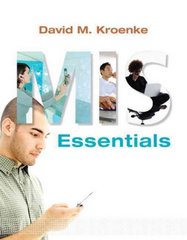Question
Respond to peer discussion below with either disagreeing with or expanding their ideas. Part 1 Read carefully section Examining the Evidence: Money as Motivator found
Respond to peer discussion below with either disagreeing with or expanding their ideas.
Part 1
Read carefully section "Examining the Evidence: Money as Motivator" found in Chapter 5 of the Neck et al. textbook. For the discussion:
Assess research findings linking financial incentives for tasks that require creativity, problem solving, and memory. What are the strengths of such an approach? What are the limitations?
Evaluate non-financial incentives, identified by in the business literature, that leaders can implement to increase employee performance. What are your views and experiences with non-financial motivators?
When it comes in incentivizing employees a lot of employers think of monetary rewards first and they do for the most part work. Nicole Torres reported in 2010, one large Asian information technology services company decided to run an experiment to see if rewards could improve and encourage employee ideas. People could already submit suggestions through an internal system, but the company wanted to test whether rewards would lead to better ideas... Employees would receive rewards for ideas that were accepted for implementation. These rewards came in the form of points that could be used at an online store. If the idea was accepted, each member of the contributing team got 2,000 points, which was worth about "2.2% of monthly after-tax salary for lower-level employees." And people could earn more if the client gave a good rating. (Torres, 2015) The findings from the experiment showed that by rewarding employees for ideas that were approved and benefitted the customer did not overall increase the number of ideas of projects coming in but did improve the quality of the idea. Therefore, I believe that a financial incentive can be beneficial even in fields that focus on creativity.
Other types of incentives that have been discussed are time off, food delivered to work, trips and group outings. My experience with these motivators is that they work too, but it comes down to an employee's actual wants and needs and money fits for most.
Part 2
Next, take Self-Assessment 5.1 [Leadership Motivation Assessment] Neck et al. Chapter 5. Consider sharing your results and what this assessment provides about how you approach leading change.
On the assessment I scored a 35 which according to the text implies that I have some uncertainty over my motivation to lead. (Neck et al,. 2020. P. 151) This result is somewhat comical because at points during the assessment I thought that this would be a terrible experience for me and at others I thought it was right up my lane. After thinking about it some more I enjoy encouraging people and helping with projects, but I do not enjoy being the leader.
Step by Step Solution
There are 3 Steps involved in it
Step: 1

Get Instant Access to Expert-Tailored Solutions
See step-by-step solutions with expert insights and AI powered tools for academic success
Step: 2

Step: 3

Ace Your Homework with AI
Get the answers you need in no time with our AI-driven, step-by-step assistance
Get Started


